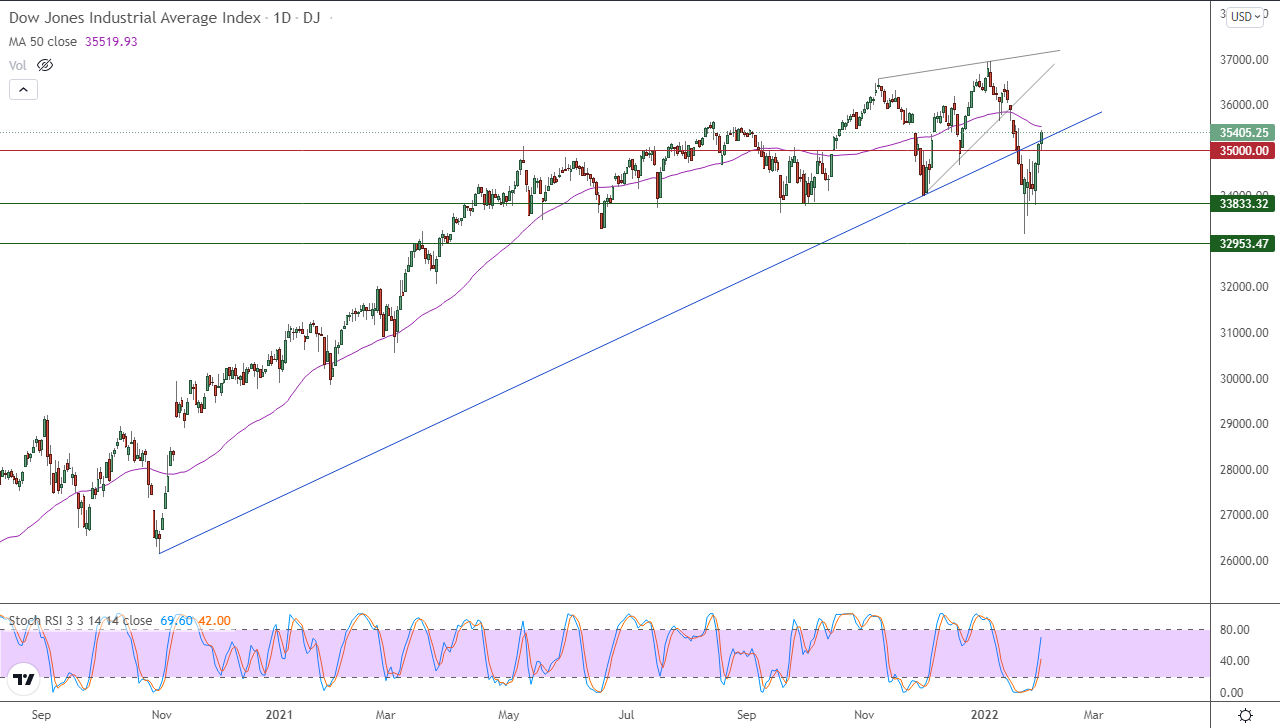The Dow Jones Industrial Average rose by 0.78% in its recent trading at the intraday levels, to achieve gains in trading on Tuesday, the first day in February. It added about 273.38 points and settled at the end of trading at the level of 35,405.25, after rising in a session on Monday, by 1.17%.
In economic data, the Labor Department said that job opportunities rose by 150,000 to 10.9 million on the last day of December, indicating that the labor market remains tight. Economists polled by the Wall Street Journal had expected a reading of 10.5 million.
The Institute for Supply Management's measure (which is closely monitored to monitor manufacturing activity) slumped to a 14-month low of 57.6% in January. This happened as a torrent of omicron cases from the novel coronavirus hit the US economy, and labor and supply shortages led to impede production. Economists had expected a decline to 57.7% from 58.8% in December. Any number above 50% indicates growth.
However, the reading is unlikely to change the course of the Federal Reserve, which has already indicated plans to start a possible rate hike in March.
Technically, the index's rise comes amid the influx of positive signals on the relative strength indicators, after reaching earlier oversold areas, to settle above the main resistance level of 35,000, for the first time since January 19.
Despite the index’s strong ascent, it still suffers from breaking a major bullish trend line earlier, as shown in the attached chart. It retests its recent rise as resistance this time, which coincides with touching the resistance of its 50-period simple moving average. The previous day, which reinforces the strength of that area as a resistance in front of more gains for the index.
Therefore, our expectations suggest a return to the index's decline during its upcoming trading, especially if its stability returns below the 35,000 level, after which it will target the support level 33,833.30.

